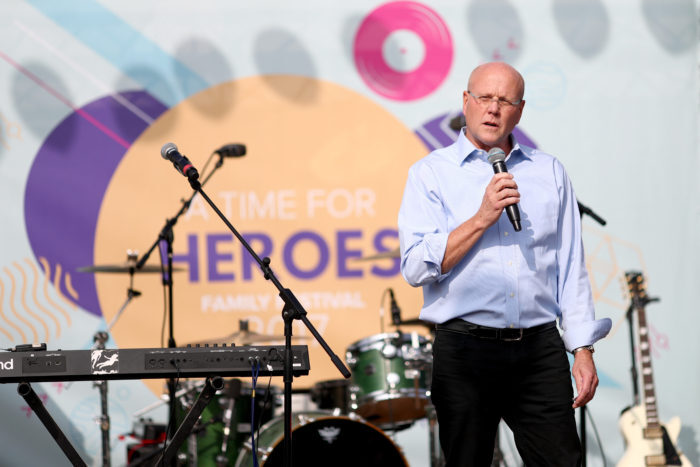This is the final installment in a three-part blog series by EGPAF Ambassador Fátima Ptacek. The series highlights three different facets of the global HIV/AIDS response: first, politics and policy; second, research and treatment; and third, advocacy and activism. In Part III, Fátima sits down with EGPAF President & CEO Chip Lyons to discuss EGPAF’s accomplishments, goals for the future, and the role her generation can play in the fight to end HIV/AIDS. Parts I & II include an Interview with Representative Joseph Crowley (D-NY), and an Interview with Dr. Warren Andiman.

Q: In 2000, there were 1,400 new pediatric infections each day and now that number is down to 400*; what do you think are the factors that enabled EGPAF and its allies to achieve such dramatic progress?
A: There are a number of factors that influence such a dramatic drop, but we focus on three in particular. The first factor is that influential people and political leaders spoke up about kids. If you look at which countries in Africa have made the most progress in reducing new infections, they include Rwanda, South Africa, and Botswana. One of the similarities between those countries is that their presidents listened to community advocates and prioritized HIV among children.
The second factor is the continued dedication of our partners in the field. This includes everyone from nurses in clinics, to community and religious leaders, and mothers who are determined to improve their health and the health of their babies. When we can help government officials to work closely with those working in the field, we can see progress on community, regional, and national levels.
Lastly, a lot of progress is thanks to the thousands of researchers who have dedicated their professional lives to try and control this epidemic. There are more tools today than ever before and it has helped propel us toward a dramatic decrease in new infections.

Q: Those three drivers of success—advocacy, treatment, and research—are reflected by the three “prongs” of EGPAF’s approach toward eliminating AIDS in children. What are some of the specific advantages to this approach?
A: This approach works because each of the three prongs is interconnected and can strengthen each other when they are implemented. That advocacy role and the voice of EGPAF is influential. We are asked, for example, by members of Congress about progress and how to reach more children. Continued advocacy helps make the case for EGPAF and partners to do the amazing work they do in the field. Meaning people get tested and counseled and initiated on treatment, and it is the reason we have seen a decrease in new infections. Research then helps us identify what is working best, and how we can make things work better – which is critical for ongoing progress. I believe our programs strengthen our advocacy and our advocacy strengths our programs, and our research informs both. It’s a virtuous cycle, in which each of them contributes in a really meaningful way to achieving our goal.
Continued advocacy helps make the case for EGPAF and partners to do the amazing work they do in the field.
Q: It’s been demonstrated that stigma is a major hurdle in eliminating HIV and AIDS. Can you give me some examples of how stigma can be addressed at the community and national levels?
A: If someone could find a vaccine to prevent stigma, not only would we be better off in controlling HIV and AIDS, but it would be a better world. It’s a value judgement that has to be addressed by people in the community and be spoken to by public figures who are admired in those communities. People need to see, hear, and reflect on the fact that they are judging someone. And addressing this needs to be persistent because it does so much damage to people’s self-esteem and to the health-seeking actions that they should be taking. It really is a conversation – it’s a changing hearts and minds kind of challenge, and that is a personal one. It needs to come from someone who is well-respected and they need to say that there is no space for stigma in our community or country.
It is important for young people to continue this fight and build off of the progress so many researchers, politicians, and others have made these past 30 years.
Q: As a person that was actively involved in global health during the worst years of the epidemic, what do you wish people my age understood on a more visceral level about the early years of the epidemic?
A: One of the things I would emphasize is that your generation cannot afford to be complacent – because HIV has not gone away. The threat is still real – there are still 30,000 to 40,000 new infections in the US every year. The other thing that I would want your generation to recognize is that an enormous fight has been underway for thirty-some years and it has been a struggle. A bunch of us lived through and were afraid of it because there was nothing to be done except to try and reduce pain and hold hands for comfort. But what your generation can do and be, is the generation that ends it. There is the global goal by 2030 to end AIDS as a public health crisis and it is super important for young people to continue this fight and to build off of the progress so many researchers, politicians, and others have made these past 30 years.




